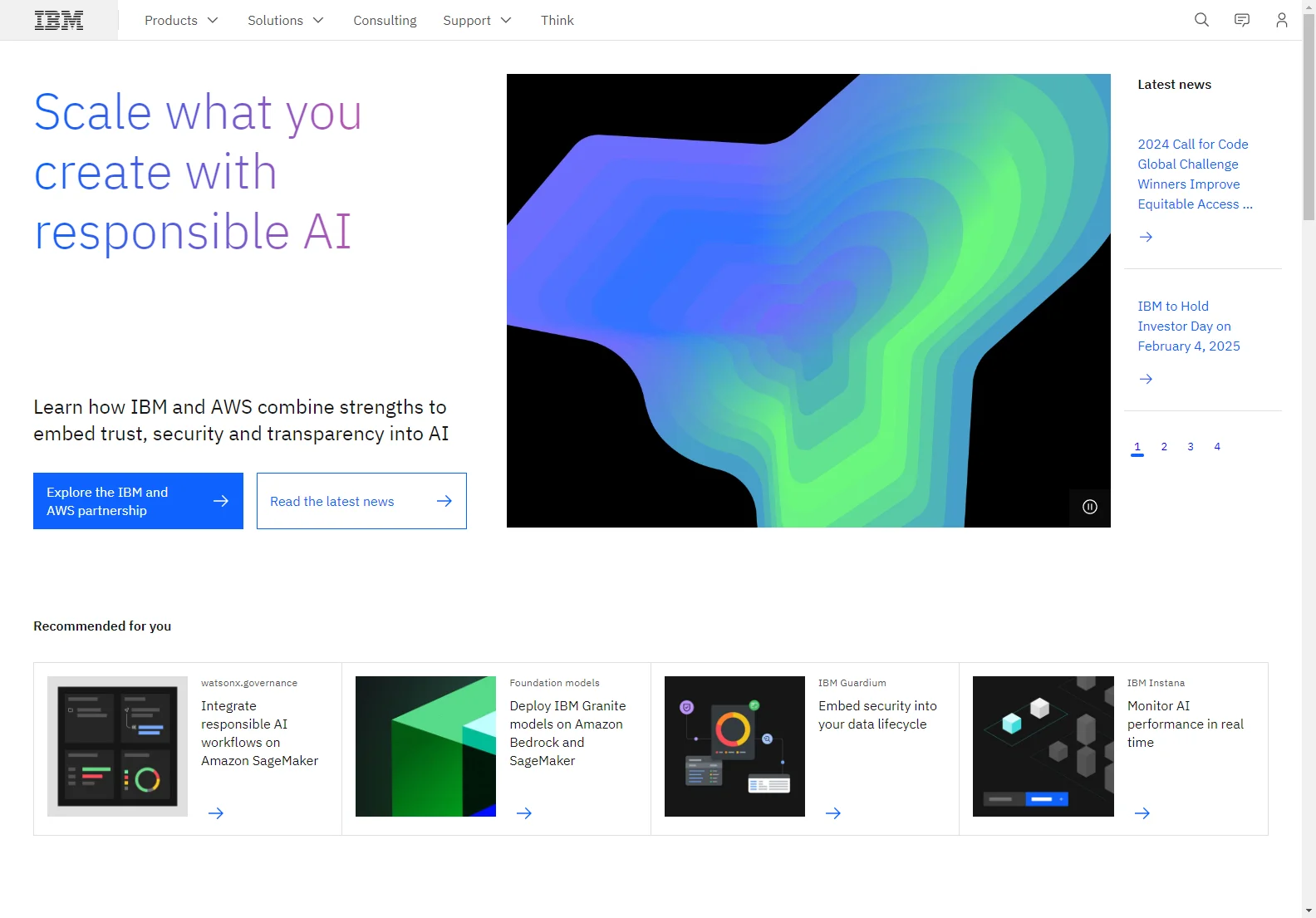IBM Watson Studio: A Comprehensive Guide
IBM Watson Studio is a powerful AI and machine learning platform that empowers data scientists, developers, and analysts to build, run, and manage AI models. It streamlines the entire AI lifecycle, from data preparation to model deployment and monitoring, all within a unified environment. This guide will explore its key features, benefits, and use cases.
Key Features
- MLOps Capabilities: Watson Studio provides a collaborative platform for building, training, and deploying machine learning models, supporting various data sources and streamlining workflows. Advanced features like automated machine learning (AutoAI) and model monitoring ensure efficient model management.
- Decision Optimization: The platform simplifies the selection and deployment of optimization models, enabling the creation of dashboards for enhanced collaboration. It combines visual data science with open-source libraries and notebook-based interfaces.
- Natural Language Processing (NLP): Watson Studio offers access to pre-trained, high-quality NLP models in multiple languages, facilitating text analysis tasks. These models are developed and maintained by experts at IBM Research and IBM Software.
- AutoAI: This automated machine learning feature accelerates AI development for both beginners and experienced data scientists. It automates data preparation, model development, feature engineering, and hyperparameter optimization.
- AI Governance: Automated tools and processes help organizations manage and monitor AI workflows, ensuring transparency and explainability. This includes tracing data origins, models, metadata, and pipelines.
- Open Source Integration: Watson Studio supports popular open-source frameworks like PyTorch, TensorFlow, and scikit-learn, allowing users to leverage their preferred tools and libraries.
- Visual Tooling: The platform includes integrated visual tools, such as IBM SPSS Modeler, for quick data preparation and visual model development.
- Model Management and Monitoring: Watson Studio offers robust model management and monitoring capabilities, allowing users to track quality, fairness, and drift metrics. It also enables customized model monitors and metrics.
- Model Risk Management: The platform facilitates model comparison, evaluation, and selection using new data, providing insights into key model metrics.
Benefits
- Optimized AI and Cloud Economics: Watson Studio allows for flexible consumption models and enables AI deployment anywhere, optimizing AI and cloud costs.
- Improved Productivity: By unifying tools and streamlining workflows, Watson Studio increases productivity for ModelOps and reduces the time and cost associated with managing disparate tools.
- Enhanced Collaboration: The platform fosters collaboration among data scientists, developers, and analysts, enabling teams to work together more effectively.
- Explainable AI: Watson Studio helps deliver explainable AI, reducing model monitoring efforts and increasing model accuracy.
- Reduced Risk and Improved Compliance: The platform simplifies AI model risk management and helps organizations meet regulatory compliance requirements.
Use Cases
Watson Studio finds applications across various industries and use cases, including:
- Financial Services: Risk assessment, fraud detection, algorithmic trading.
- Healthcare: Disease prediction, personalized medicine, drug discovery.
- Retail: Customer segmentation, recommendation systems, supply chain optimization.
- Manufacturing: Predictive maintenance, quality control, process optimization.
Comparisons
Compared to other platforms like Azure Machine Learning and Google Cloud AI Platform, Watson Studio offers a strong emphasis on MLOps, decision optimization, and built-in AI governance features. Its integration with IBM SPSS Modeler provides a powerful visual modeling capability. However, other platforms might offer more extensive support for specific open-source tools or cloud-native services.
Conclusion
IBM Watson Studio is a comprehensive and versatile AI platform suitable for organizations of all sizes. Its robust features, streamlined workflows, and focus on AI governance make it a valuable tool for building, deploying, and managing AI models effectively.

